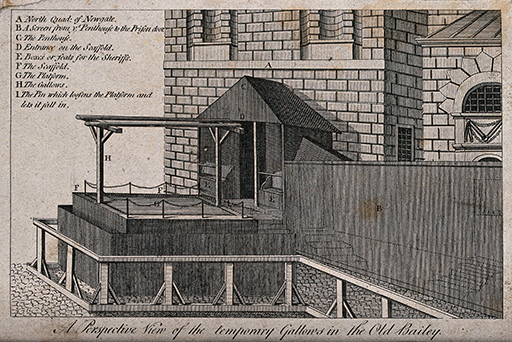3.3 Revisionists, post-revisionists and the decline of hanging

Whig history had explained the reluctance to enforce the Bloody Code by the rise of a more ordered and rational civilised society, but by the end of the twentieth century historians had begun to question and revise this view. These historians found (just as you have) that the Code did not operate exactly as it was written and some argued it ‘collapsed’, but not for the reasons given by Whig history. Their view is known as the revisionist approach.
Revisionist historians including J.M. Beattie (1986) and Douglas Hay (1980) argued that the Bloody Code was not really imposed in an arbitrary manner but was an instrument of elite control over social threats. Some revisionists argued that juries and prosecutors were deterred from convicting offenders in case they might be hanged so the use of the death sentence declined. Conversely, the revisionist V.A.C. Gatrell (1996) argued that it was because of the number of successful prosecutions, resulting in hangings, that so many crimes were pardoned. Ultimately, revisionist historians, like their Whig predecessors, agreed that hangings declined in popularity and number through the last decades of the eighteenth and first decades of the nineteenth centuries but disagreed on why this happened.
Post-revisionist historians including John Walliss (2018a), Peter King and Richard Ward (2015) have since researched the national and regional operation of the Bloody Code to determine the factors that impacted on sentencing and execution. Other post-revisionist historians have researched the response to specific crimes like forgery or infanticide.
To sum up this long and complex historiography very briefly, you could say that the Whig historians believed the Bloody Code system of law worked nationally as written but was too brutal and irrational to last. The revisionists argued that the law operated as written, but that people, including juries, mainly worked around it, either because it was too extreme or not really a deterrent. The post-revisionists argued that in many places the authorities only operated the Bloody Code in certain limited circumstances. You can see that this is quite a shift in understanding the operation of the Code which took time and, more importantly, careful research.
Activity 9
Examining the implementation of the Bloody Code, post-revisionist historians Peter King and Richard Ward found very different sentencing policies throughout mainland Britain.
Access the following link in a new tab or window: Rethinking the Bloody Code in eighteenth century Britain: capital punishment at the centre and on the periphery [Tip: hold Ctrl and click a link to open it in a new tab. (Hide tip)] . In the PDF version of the article, read from ‘The geography of the Bloody Code …’ on p. 166 to ‘… the capital sanction than the Welsh (Table 1)’.
What do you notice about this map and what did they measure?
Tip: Consider the distance of places from the capital.
Discussion
King and Ward can be called post-revisionist historians; they have counted executions and compared them to population rates. You can see that their findings show that the further you were from London, the rarer it was to be hanged under the Bloody Code and the less likely people were to see hangings. In and around London, property crime was treated more harshly than elsewhere in the United Kingdom. Outside London, and across the four nations, the spectacle of Tyburn style public hanging was unusual.
